Christie's to offer the collection of the late Oliver Hoare
Oliver Hoare (1945-2018). © Oliver Hoare Limited, 2019.
LONDON.- On October 25th, Christie’s will present the collection of the late Oliver Hoare (1945-2018). A highly influential and much loved art dealer who specialised in Islamic art, Oliver inaugurated Islamic sales at Christie’s in 1975 when working for the auction house. Known for celebrating the remarkable stories of objects from across countless countries and eras, and the joy and intrigue that they could bring, Oliver assembled a collection of works of art for his exhibitions under the banner ‘Every Object Tells a Story’ where a number of these pieces were shown. Comprising approximately 130 lots, the sale will include works of art from all over the globe, ancient and modern, with individual estimates from £300 to over £1.5 million.
Led by works from the Islamic world, the top lot is an exceptional 15th century Timurid manuscript – known as the Jam-I Jam – by Mawlana Shir Ali, with four illustrations by the celebrated and extremely rare artist [Kemal al-Din] Bihzad, which was once part of the Mughal Imperial Library; it is the earliest known work by the artist, produced with the calligrapher with whom he worked again on a manuscript now in the Bodleian Library, Oxford (estimate: £1-1.5 million). Equally characteristic of the collector’s eye is an arresting 17th century silver apple with bite marks; it opens to reveal a pomander in the shape of a skull, which is reputed to have been in the possession of King James II (estimate: £12,000-18,000). It was sold at Christie’s in 1855 as part of the Bernal Collection.
Lot 80. Rukn Al-Din Awhadi Maragha’i known as Awhad Al-Din Isfahani (D. 1338 AD): Jam-I Jam (The Cup of Jamshid), the text signed Shir ‘ALI, The illustrations signed by Bihzad, Timurid Herat, dated AH 863/1459-60 AD. Text panel 7 5/8 x 4in. (19.3 x 10.2cm.); folio 12 x 7 5/8in. (30.5 x 19.3cm.). Estimate GBP 1,000,000 - GBP 1,500,000 (USD 1,245,000 - USD 1,867,500). © Christie's Image Ltd 2019
Poetry, Persian manuscript on paper, 48.ff, plus four fly-leaves, 25ll. of elegant black nasta’liq arranged in four columns and various arrangements within double gold rules, titles in red and gold thuluth within illuminated cartouches across two columns, text within gold and polychrome rules, gold peckled polychrome margins, opening bifolio with full page courtly scene illustrations, preceded by an illuminated opening framing 11ll. of text, two further full page illustrations on folios 27r, inscribed Bihzad and 30v, various seal impressions on the recto of folio 1, colophon signed and dated, in a finely painted lacquered Safavid binding with hunting scenes, doublures in gilt, painted, stamped and découpé morocco with central medallion.
Lot 63. A Silver Skull Pomander, English, 17th century. Skull: 2 in. (5 cm.) long; apple 3 ¼ in. (8.3 cm.) high. Estimate: GBP 12,000-18,000 (USD 14,940 - USD 22,410). © Christie's Images Ltd 2019.
Silver; an apple opening and containing a skull; the apple with bite marks and an inscription reading 'A.D. 1628/ From Man/ Came Woman/ From Woman/ Came Sin/ From Sin/ Came Death'; the interior of the apple with silver-gilt cavity; the skull crowned with a wreath, and containing a miniature depicting Christ leading the souls out of Limbo with the inscription 'Post mortem, vita/ Ooeternitas'; set in a leather-box.
Provenance: Possibly, King James II of England.
Ralph Bernal (1784-1854).
Bernal Collection, Christie's London, 23rd April 1855, lot 3506.
Lord Londesborough.
With Mrs How, London, mid-20th century.
'Literature: The Bernal Collection', The Times, 27 April 1855, p. 5.
T. Wright, Ancient, Medieval, and Renaissance Remains in the possession of Lord Londesborough, London, 1859; drawing by Frederick Fairholt, p. 63.
E.F. King, Ten Thousand Wonderful Things, London, 1860
Detroit Free Press, January 1880.
The Connoisseur, London, vol. 93, part 2, 1934.
Exhibited: London, Oliver Hoare, Every Object Tells a Story, 4 May - 5 July 2017, no. 273.
Note: This extraordinary skull pomander would have been carried as a protection against infection or as a useful article to modify bad smells. The name derives from the French pomme d'ambre, meaning apple of amber. The present pomander would also have had a philosophical meaning for its owner. The skull form served as a memento mori, a reflection on human mortality, emphasised by the miniature painting to the interior depicting Christ saving souls from Limbo. The apple which encases the skull, has bite marks to the outside and an inscription which relates to the creation of man and to humanity's lapse into sin when Eve took a bite of the apple in the Garden of Eden.
The early provenance of the pomander has yet to be fully unravelled. It was first documented when it was sold at Christie's in 1855 as part of the famous Ralph Bernal collection sale which lasted for thirty-two days including 4294 lots. Four years later it was included in a catalogue of the collection of Lord Londesborough. For this catalogue Frederick Fairholt drew the apple and skull pomander; on the exterior of the apple in addition to the surviving inscription 'From Man Came Woman From Woman Came Sin From Sin Came Death' the drawing shows a royal crown with the initial 'JR', a reference to James II of England who ruled until his death in 1701. That this crown and the initials 'JR' are no longer to be seen on the apple is explained by a story recounted by Commander How in the mid-20th century, as told by his wife, Mrs How, who was a pre-eminent silver dealer based in London. Mrs How noted that when she owned the pomander she 'submitted it to the head of the Metalwork Department of one of our greatest museums, and he assured me that though the Skull and Apple container were genuine, and the inscription original, the lightly engraved crown and initials had obviously been put on by somebody at a much later date to give it a spurious association with James I. As the engraving was light he advised me to have it removed. This I did. A few months later he rang me up on the telephone to say he had made an interesting discovery; he had found an early reference to this particular object and a drawing of it showing the crown and “J.R.”, which, in the circumstances, was conclusive evidence that they were of early date.' However, that the crown and initials were not mentioned in the catalogue entry in the Bernal sale of 1855 suggest that they could have been added in the four years between the sale and the 1859 catalogue of Lord Londesborough's collection.
William Robinson, Christie’s International Head of Group, World Art: “As head of the Islamic Department, I for many years enjoyed filling the position which was first created for Oliver. It therefore gives me huge pleasure that Christie’s have been asked to handle the Oliver Hoare sale, his family actively wanting to encourage new collectors, and with them, new stories to be told. Oliver was such an enthusiast for each individual work, the story it can tell, that it came alive when he discussed it. Our aim is to recreate the spirit of Oliver: both the relaxed gallery ambience, with an encouragement of dialogue, and by conveying the simple wonder of arcane, intriguing and simply beautiful works of art.”
Oliver’s children, Tristan, Damian and Olivia: “Our father’s interest in Islamic art can be traced back to his childhood when he was gifted a large silver coin from Persia; from that moment, it became a place of mystery and fascination to which he longed to go. That opportunity would only come after he became a student in Paris, from where he set off overland by train and then bus, taking more than a week to reach Tehran. He had a total fascination with all objects; both the modest and the masterpiece, and from across cultures - he loved their stories, their beauty and the potential to learn from them. This last point was perhaps the most important for him and the reason he never considered himself the owner of any object, his intention always being to learn what he could and then pass it on. It is in this spirit that the family are happy to offer this collection in the hope that others will be able to enjoy, learn and delight in these objects, just as he did.”
The collection also features a Mille-Fleurs Unicorn Tapestry, a masterpiece of the Middle Ages created in Flanders between 1500 and 1530 (estimate: £120,000-180,000). This tapestry is from the suite of tapestries known as the ‘Lady and the Unicorn’; a series of seven such mille-fleurs tapestries in the Cloisters, Metropolitan Museum New York, also display the initials AE and are also from the La Rochefoucault family, as the present example is believed to be. Traditionally the Unicorn was a symbol of feminine chastity and the cult of the Virgin Mary and this tapestry shows an elegant, richly attired Lady seated with a Unicorn resting his head in her lap, with another Lady and a young man to her right.
Lot 92. The Lady and the Unicorn, Flanders, circa 1500; 142cm x 248cm. Estimate: GBP 120,000 - GBP 180,000 (USD 149,400 - USD 224,100). © Christie's Images Ltd 2019.
woven with a central, elegantly attired lady with a leashed polecat (?) on one hand and a flower in the other, to the right, a lady cradling a unicorn in her lap and to the left, a youth feeding an exotic bird on his arm, carrying a pouch with the initials AE, all woven against an indigo ground with naturalistic mille-fleurs and the occasional rabbit.
Provenance: Formerly thought to have been part of the La Rochefoucault family collection, France
Jean Dolfus (1823-1911), France
Gogue-Robin collection, France
Jacques Bacri collection, Paris.
Note: Compare the series of seven mille-fleurs tapestries in the Cloisters, Metropolitan Museum New York, Aquisition Numbers 37.80.1-6 also woven on an indigo blue background with strikingly similar mille-fleurs background, and which bear the same initials, that is to say 'AE' as woven on the wallet carried by the figure on the left.
The Metropolitan Museum’s examples were formerly attributed to the La Rochefoucault family, The initials were thought to refer to Francois, son of Jean II de La Rochefoucault and Marguerite de Barbezieux, specifically to the first and last letters of his wife Antoinette d’Amboise, and their son Antoine.
It seems likely that the present example was probably part of the same commission.
The Hunters Enter the Woods (from the Unicorn Tapestries), 1495–1505, South Netherlandish. Wool warp, wool, silk, silver, and gilt wefts. Overall: 145 x 124 in. (368.3 x 315cm). Gift of John D. Rockefeller Jr., 1937, 37.80.1. © 2000–2019 The Metropolitan Museum of Art.
The Unicorn is Found (from the Unicorn Tapestries), 1495–1505, South Netherlandish. Wool warp, wool, silk, silver, and gilt wefts. Overall: 145 x 149 in. (368.3 x 378.5cm). Gift of John D. Rockefeller Jr., 1937, 37.80.2. © 2000–2019 The Metropolitan Museum of Art.
The Unicorn is Attacked (from the Unicorn Tapestries), 1495–1505, South Netherlandish. Wool warp, wool, silk, silver, and gilt wefts. Overall: 145 x 168 in. (368.3 x 426.7cm). Gift of John D. Rockefeller Jr., 1937, 37.80.3. © 2000–2019 The Metropolitan Museum of Art.
The Unicorn is Defends Itself (from the Unicorn Tapestries), 1495–1505, South Netherlandish. Wool warp, wool, silk, silver, and gilt wefts. Overall: 145 x 158 in. (368.3 x 401.3cm). Gift of John D. Rockefeller Jr., 1937, 37.80.4. © 2000–2019 The Metropolitan Museum of Art.
The Unicorn in Captivity (from the Unicorn Tapestries), 1495–1505, South Netherlandish. Wool warp, wool, silk, silver, and gilt wefts. Overall: 144 7/8 x 99 in. (368 x 251.5 cm). Gift of John D. Rockefeller Jr., 1937, 37.80.6. © 2000–2019 The Metropolitan Museum of Art.
A l'Heure de l'observatoire – les amoureux (Observatory Time – the Lovers) is one of Man Ray’s most celebrated images (estimate: £30,000-50,000). This lithograph, one of only two known colour trial proofs before the edition of 150, is based on the painting of the same name which was executed from 1932-34. Depicting the lips of the photographer Lee Miller, floating in a sky above the Paris observatory, the painting was made in response to the ending of their relationship in 1932, and has become an icon of surrealism.
Lot 62. Man Ray (1890-1976), A l'heure de l'observatoire - Les amoureux. Lithograph in colours, 1970. Image 14 x 35 ½in. (35.4 x 90cm). Estimate: GBP 30,000 - GBP 50,000 (USD 37,350 - USD 62,250). © Christie's Images Ltd 2019.
on wove paper, signed in pencil, inscribed ESSAY (sic), a rare trial proof before the edition of 150 published by J. Petithory, Paris, with wide margins, framed.
Literature: Anselmino 15
Exhibited: London, Oliver Hoare, Every Object Tells a Story, 2017, no. 322.
Note: A l'Heure de l'observatoire – les amoureux (Observatory Time – the Lovers) is one of Man Ray’s most celebrated images. This lithograph is based on the painting of the same name which was executed from 1932-34. Depicting the lips of the photographer Lee Miller, floating in a sky above the Paris observatory, the painting was made in response to the ending of their relationship in 1932, and has become an icon of surrealism.
This colour trial proof is printed with a yellow background hue, rather than the blue of the standard edition. Only one other impression of this colour variation has appeared at auction in the last thirty years (Sotheby's, London, 22-23 March 1995, lot 526).
The source of the fascinating design for an unusual Silk Heraldic Animal Rug, possibly Kashan, Central Persia, circa 1910, remains somewhat of a mystery (estimate £25,000 - 30,000). A highly unusual composition comprising ninety-eight figures of heraldic, realistic and abstract form that are rich in moralistic and religious iconography.
Lot 68. A Silk Heraldic Animal Rug, possibly Kashan, Central Persia, circa 1910. Unmounted; 6ft.4in. x 3ft.8in. (198cm. x 116cm.), Mounted; 6ft.8in. x 4ft.3in. (209cm. x 132cm). Estimate: GBP 25,000 - GBP 30,000 (USD 31,125 - USD 37,350). © Christie's Images Ltd 2019
Touches of wear and corrosion, minor restorations, backed and mounted.
Exhibited: Every Object Tells a Story, 2015, no.125.
Note: The knot count is approximately 7H x 8V per cm. sq.
The design of this extraordinary and seemingly unique silk carpet remains somewhat of a mystery. Due to various technical characteristics, it seems likely that this rug was woven in central Persia in one of the ateliers in Kashan where the weavers were highly accomplished in weaving silks. The field design is divided into ninety-eight squares with alternating deep indigo and ivory backgrounds. Within each of the squares lies an individually drawn figure of heraldic, naturalistic or abstract form that is rich in moralistic, religious or mythical iconography. The mid-blue border is filled with a snaking angular vine that binds itself around a series of larger-scale parading animals and birds. Was the intention of this carpet to serve as a textual kaleidoscope of medieval bestiary? The bestiary was one of the great illuminated manuscript traditions of the Middle Ages. Encompassing imaginary creatures, such as the unicorn, siren and griffin; exotic beasts, including the tiger, elephant and ape; as well as animals native to Europe, like the beaver, dog and hedgehog, the bestiary is a vibrant testimony to the medieval understanding of animals and their role in the world. So iconic were the stories and images of the bestiary that its beasts essentially escaped from the pages, appearing in a wide variety of manuscripts and other objects, including tapestries, ivories, metalwork and sculpture. For a fuller discussion on the subject see, E. Morrison & L. Grollemond, Book of Beasts - The bestiary in the Medieval World, Getty Publications, 2019.
Interestingly, all of the figures depicted in the present lot are two or four legged and many are with wings, apart from the closest square to the center of the design which contains the rather surprising image of a common snail. Neither winged or with legs, this small creature is neither fierce nor bold. It is the personification of patience in life and encourages one to remain calm and tolerant.
Although a carbon date test, undertaken in 2014, yielded an early calibrated date range with a 95% confidence interval to the period 1475-1640 CE, a subsequent dye test of various coloured silks, carried out in the same year, revealed that a number of the dyes were of a synthetic nature. Indeed, the bright and dark red fibres in particular, contained a particular dye that was not discovered before 1907 which meant that the rug was unequivocally woven no earlier than this date. Despite this discovery the rug's appearance remains alluringly unique and its design an unresolved mystery.
Elsewhere in the sale, the diverse array of further highlights offered continues, including: a Maghribi Qur'an bifolium, Andalusia, circa 11th -13th century (estimate: £40,000-60,000); a unique gelatin silver print photograph by François-Marie Banier (b. 1947) depicting a table at Oliver Hoare’s office with many of his favourite objects at the time, entitled Untitled, 2011 (estimate : £20,000-30,000); a giant marble foot that is reminiscent of the ancient foot of the Colossus of Constantine and the enormous Roman foot in the Piè di Marmo in Rome, which was probably created at the behest of a Grand Tourist to the Eternal City dreaming of recreating its artistic glories in their own home (estimate: £15,000-25,000); an elegant, gilt-lacquered stucco figure of a Lama (estimate: £4,000-6,000) and a monumental George III library desk exhibiting exquisite craftmanship and dating to the days of ‘a gentleman with a library’ (estimate: £10,000-15,000). It has aristocratic provenance, having been formerly the property of the Earl of Crawford and Balcarres.
Lot 73. A Maghribi Qur'an bifolio, Andalusia, circa 13th-14th century, 9 x 8¼in. (23 x 20.7cm). Estimate: GBP 40,000 - GBP 60,000 (USD 49,800 - USD 74,700). © Christie's Images Ltd 2019
Qur'an IV, sura al-nisa', parts of vv. 149-151, Arabic manuscript on vellum, each folio with 5ll. of distinctive bold black maghribi, vocalisation in red, blue and yellow, losses to top and bottom of folios.
Provenance: Anon. sale, Christie's London, 6 October 2011, lot 159 to Oliver Hoare.
Note: This masterfully written Qur'an bifolio shows a very rare type of maghribi script for which our study has found no direct comparable example. It follows the general characteristics of the maghribi script as described by N. van den Boogert - the final alif is drawn from top to bottom, the stems of alif, lam, lam-alif and ta/za have club-like extensions to the left of their top point, the stem of ta/za is drawn diagonally, qaf and fa have unconventional diacritical points, final and separate dal/dhal are very similar to initial and medial kaf (Some notes on maghribi script: http://www.islamicmanuscripts.info/reference/articles/boogert_notes_mag hribi_script.PDF). However, the present bifolio clearly surpasses the enunciated features. The variations in the thickness of the letters, the ligatures between the lam-alifs, the overlapping between letters of two separate lines, the thin line reserved within the length of upstrokes, simulating the passing of the qalam up and down the upstroke, show a high level of inventiveness and mastery.
The first examples of maghribi script can be dated to the 10th century. The script is not identified in Qur'an copies before the beginning of the 11th century however and the earliest known dated Qur'an in maghribi script was copied in 1090 AD (Uppsala University Library, Inv.nr. O.Bj.48, see Sam Fogg, The Illuminated Word, The Qur'an, 650-1930, London, 2008, cat.18 and F.Déroche in L'art du livre arabe, exhibition catalogue, Paris, 2001). Those of the 11th to 13th centuries are often written on folios of vellum very similar to ours, and with a curious purplish staining that affects some of the margins.
Maghribi Qur'ans are also known for their format which is always nearly square. Although very popular during the 13th and 14th century, it starts to be used during the Almoravid period (1069-1147 AD) as shown by the Uppsala university Qur'an, dated 1090 AD and written in a vertical (or square) format. Copyists from the Maghreb continue to use this format until the 19th century. A copy of al-Jazuli's Dala'il al-Khayrat in the Bibliothèque Nationale written by the Moroccan calligraphier Muhammad ibn Abi'l-Qasim al-Qandusi al-Fasi (d. 1861 AD) and dated 1828-29 AD offers the closest comparison to our Qur'an bifolio. The script, although less controlled, shows almost identical features - thickness, curious ligatures, thin lines reserved within the upstrokes and sickle-like curves (Sheila S. Blair, Islamic Calligraphy, Edinburgh, 2006, p.570). Al-Qandusi is praised for his incredibly modern script but there is almost no doubt that he had access to the Qur'an from which our bifolio comes from before writing the Dala'il al-Khayrat. It must have been highly regarded example of mediaeval calligraphy to serve as a source for the 19th century calligrapher.
A carbon 14 test performed on the vellum by RCD Lockinge (Ref RCD9220) is consistent with the proposed dating for this lot. Please see the Department for full details.
Lot 32. François-Marie Banier (b. 1947), Chez Monsieur Hoare, 2011. Gelatin silver print with ink, flush-mounted on aluminium. Signed, dated three times and variously annotated in ink (image) image/sheet/flush-mount: 31 x 46 ¾ in. (78.7 x 118.7 cm.) This work is unique. Estimate: GBP 20,000 - GBP 30,000 (USD 24,900 - USD 37,350). © Christie's Images Ltd 2019
Exhibited: London, Oliver Hoare, Every Object Tells a Story, 2015, no. 187.
Note: This work shows some of Oliver’s favourite objects on a table in his gallery. This unique print was produced especially for Oliver Hoare by his friend, the photographer.
Lot 13. A Marble Giant Foot, Italian, Classical style, 47 x 31 ½ x 19 ¾in. (119 x 80 x 50 cm). Estimate: GBP 15,000 - GBP 25,000 (USD 18,675 - USD 31,125). © Christie's Images Ltd 2019
Marble foot; wearing a roman sandal; with iron elements on top and side.
Exhibited: London, Oliver Hoare, Every Object Tells a Story, 2017, ß.
Lot 42. A gilt-lacquered stucco figure of a lama, Tibet, 18th-19th century; 9 ½ in. (24 cm.) high. Estimate: GBP 4,000 - GBP 6,000 (USD 4,980 - USD 7,470). © Christie's Images Ltd 2019.
The gilt and polychrome-decorated robed figure seated in dhyanasana with his right hand held in vitarka mudra, left hand resting on his lap.
Exhibited: London, Oliver Hoare, Every Object Tells a Story, 2015, no.147.
Lot 66. A George III mahogany large library table, late 18th century, in the manner of Gillows, 33 ½ in. (85 cm.) high; 109 in. (279 cm.) wide; 55 in. (140 cm.) deep. Estimate: GBP 10,000 - GBP 15,000 (USD 12,450 - USD 18,675). © Christie's Images Ltd 2019.
The gilt-tooled later brown leather top with bowed and shaped ends above a frieze of panelled drawers, two panelled doors revealing a conforming arrangement of eight drawers, the arrangement repeated to the reverse, each side with a further panelled door, revealing four smaller drawers, on plinth base.
Provenance: The Earls of Crawford and Balcarres, Haigh Hall, Wigan, Lancashire
The Property of a Gentleman; sold Christie’s, London, November 18, 1982, lot 135.
with Partridge, London.
Anonymous sale; Sotheby’s, New York, 16 April 2005, lot 123
Acquired from Christopher Hodsoll, London.
Note: The present house of Haigh Hall, Lancashire was built between 1827-1840 replacing an earlier house at a cost of around £100,000. The 24th Earl of Crawford and Balcarres was 'the classic representative' of eighteenth-century englightenment' (see John Martin Robinson, A Guide to the Country Houses of the North-West, London, 1991, pp. 190-191). His son the 25th Earl was also responsible for the creation of one of the finest libraries at Haigh, which now forms part of the Rylands Library in Manchester.

/https%3A%2F%2Fprofilepics.canalblog.com%2Fprofilepics%2F1%2F0%2F100183.jpg)
/https%3A%2F%2Fstorage.canalblog.com%2F03%2F02%2F119589%2F96711876_o.jpg)
/https%3A%2F%2Fstorage.canalblog.com%2F11%2F31%2F119589%2F94773502_o.jpg)
/https%3A%2F%2Fstorage.canalblog.com%2F20%2F83%2F119589%2F94772815_o.jpg)
/https%3A%2F%2Fstorage.canalblog.com%2F26%2F72%2F119589%2F75604929_o.jpg)
/https%3A%2F%2Fstorage.canalblog.com%2F59%2F60%2F119589%2F26458628_o.jpg)



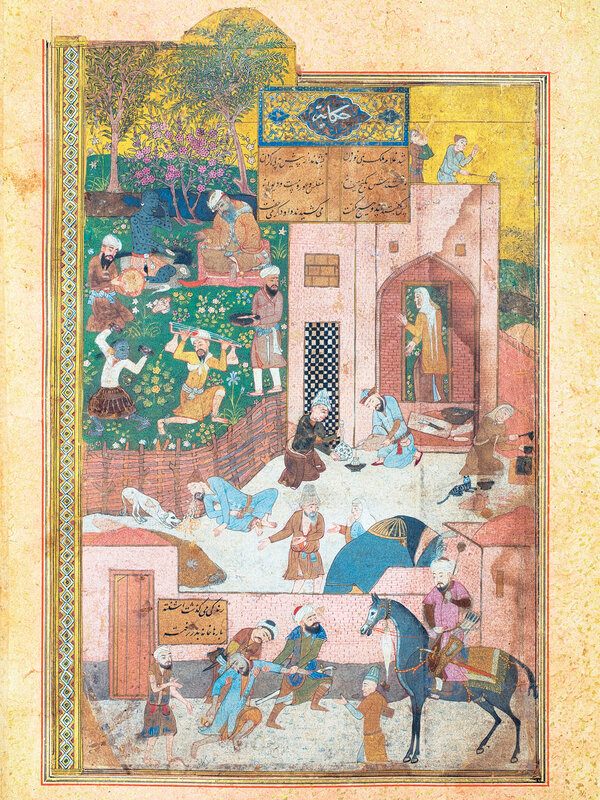




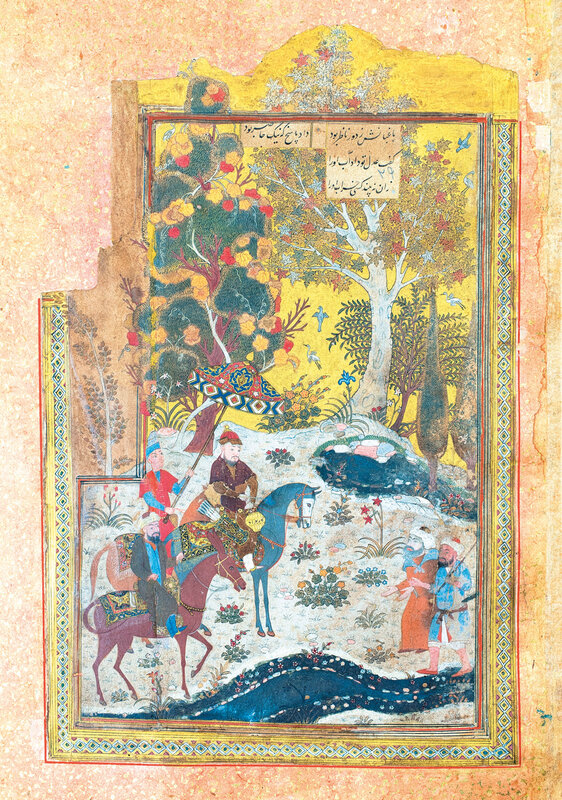


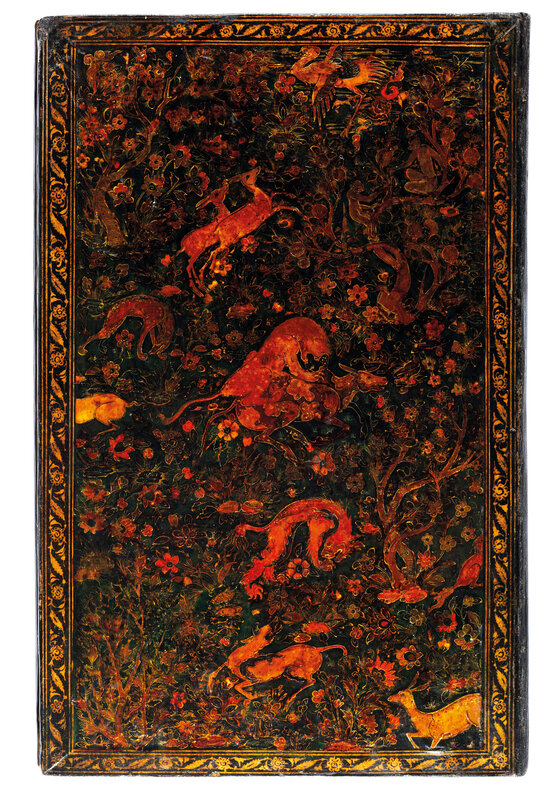



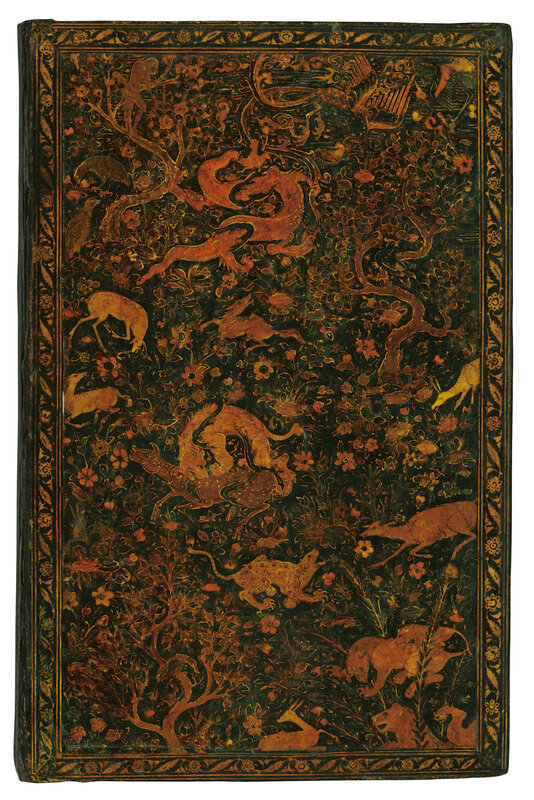




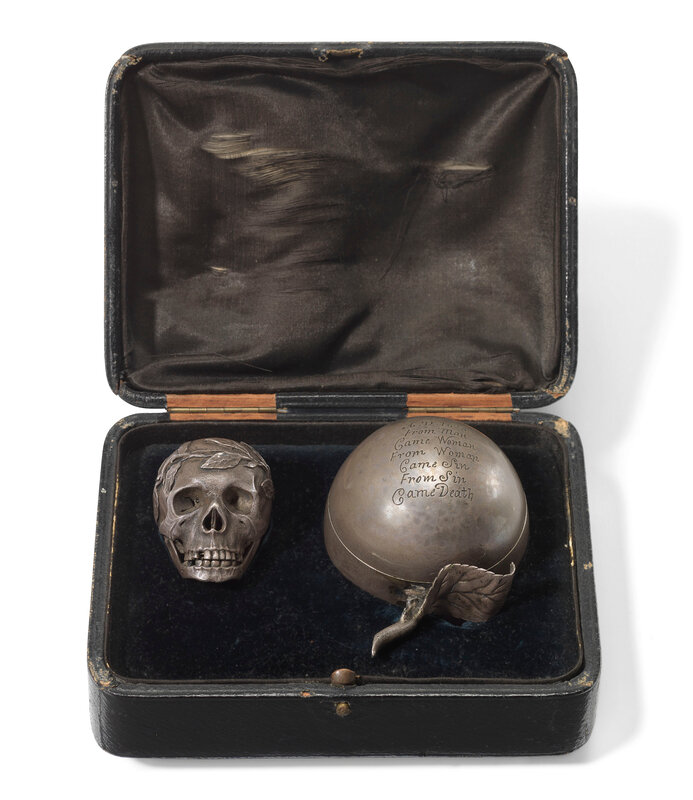



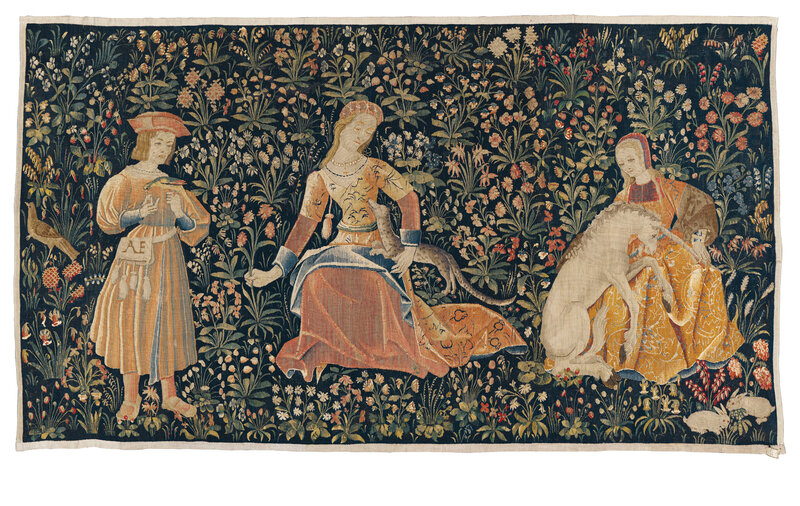



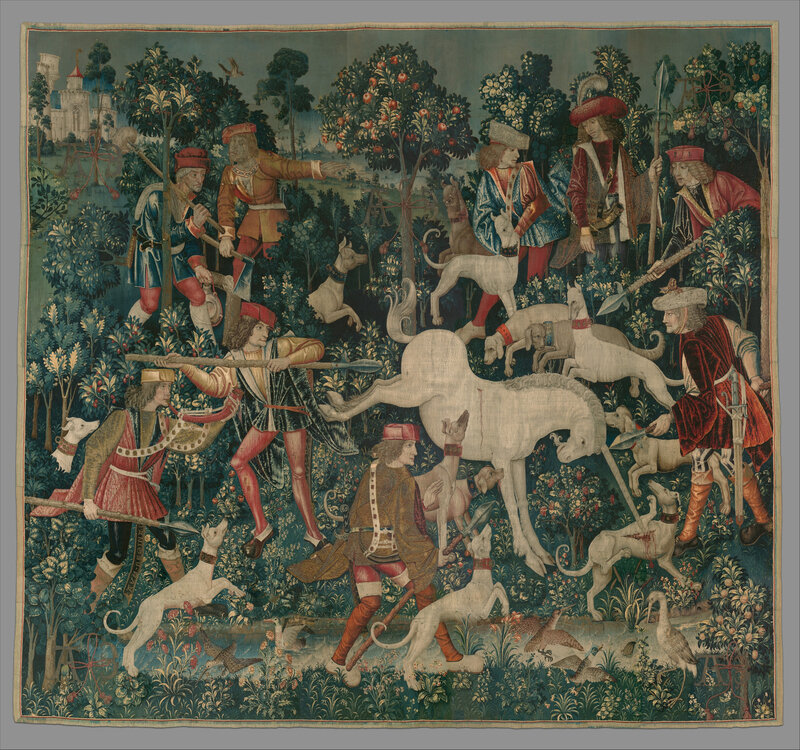

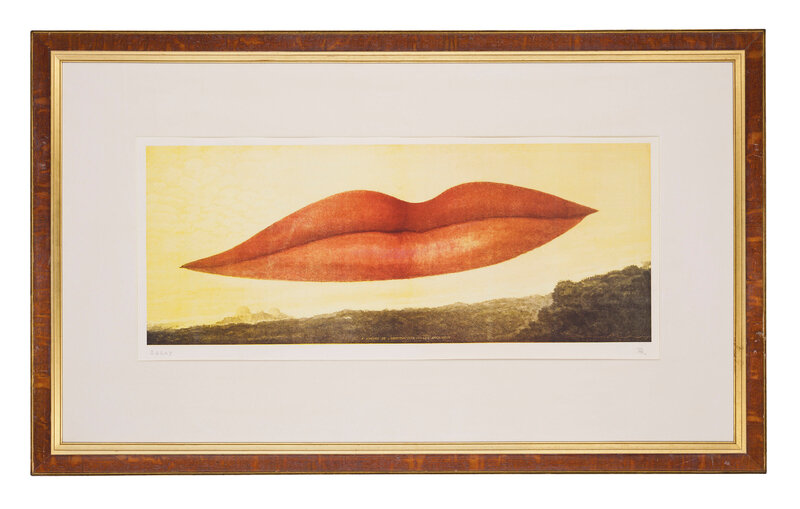


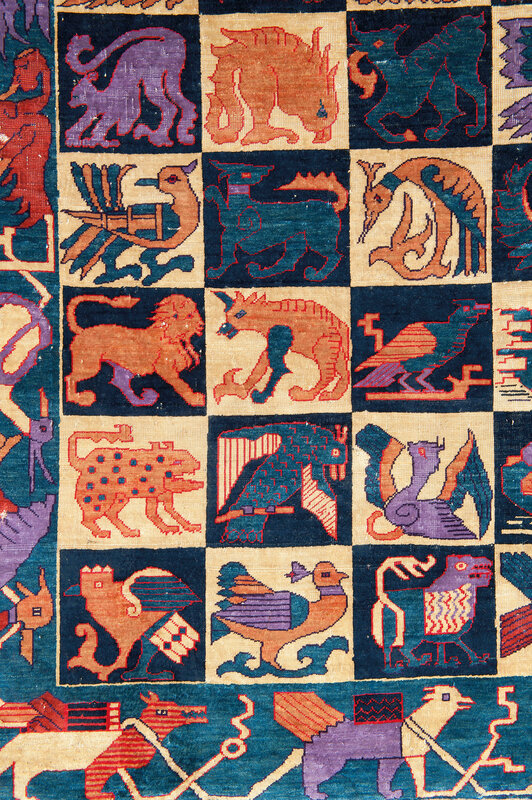
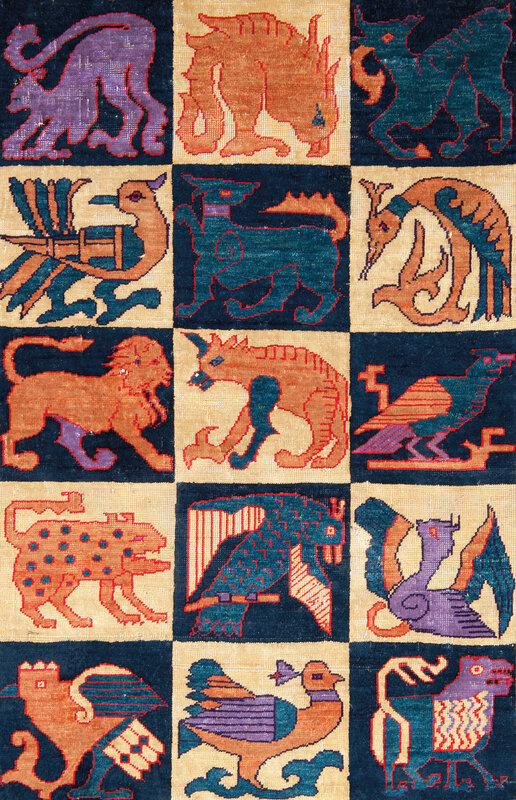



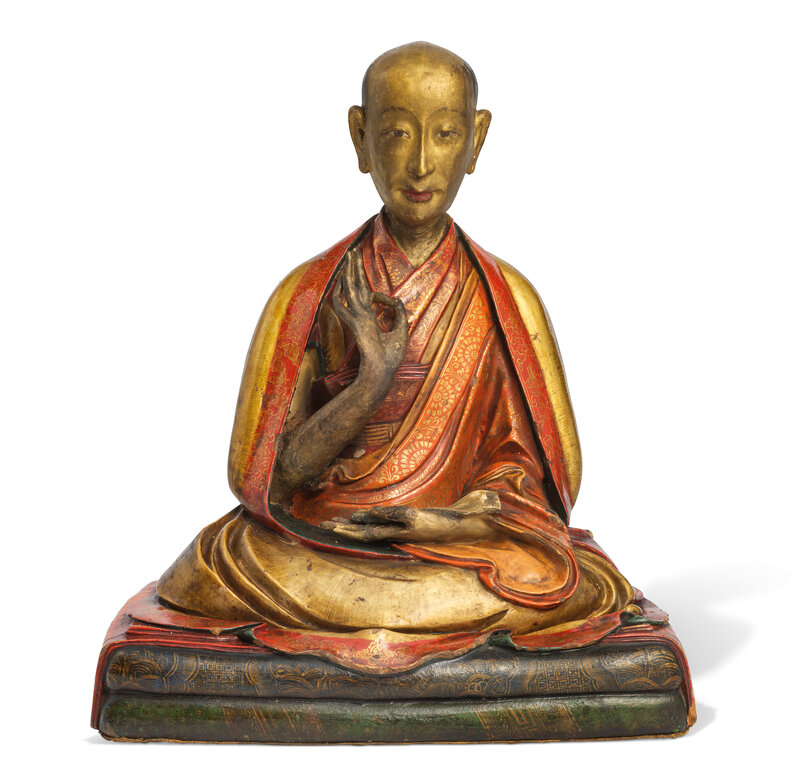

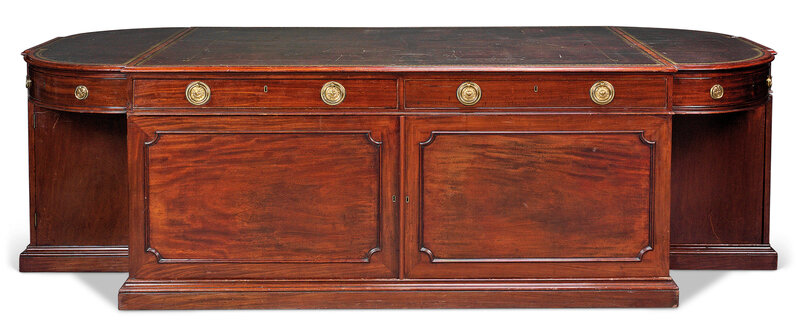


/http%3A%2F%2Fstorage.canalblog.com%2F10%2F39%2F119589%2F129610901_o.jpg)
/http%3A%2F%2Fstorage.canalblog.com%2F34%2F45%2F119589%2F126425513_o.jpg)
/http%3A%2F%2Fstorage.canalblog.com%2F56%2F28%2F119589%2F122132267_o.jpg)
/http%3A%2F%2Fstorage.canalblog.com%2F65%2F57%2F119589%2F120664915_o.jpg)